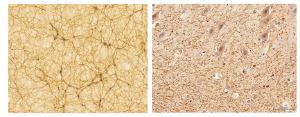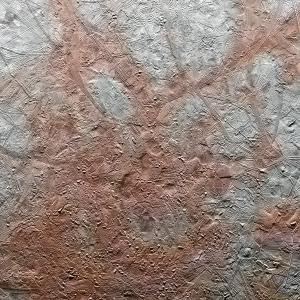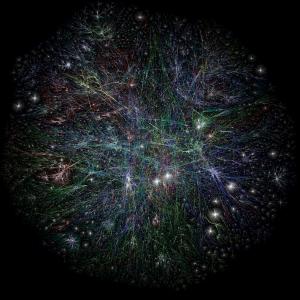Blog
The Imaginary Universe
16 November 2020
 E. Zunarelli/Vazza et al
E. Zunarelli/Vazza et alThere’s a new paper causing a stir about the remarkable nature of creation.1 Headlines gush about how the human brain has a similar structure to the distribution of the galaxies in the universe as if that means something. While it is true that both have similar structures, it isn’t a new discovery, nor is it particularly profound.
 NASA
NASAThe paper starts with a basic comparison of the structure of the cosmos and the human brain, specifically how neurons in the brain are clustered vs how galaxies are clustered in the observable universe. It turns out the scale at which clusterings occur are remarkably similar. While this is interesting, we see the same pattern with lots of complex structures. The scales at which limbs branch on a tree or ice cracks form within a smooth surface follow the same pattern. It has to do with the nature of connected systems.
In any system where the formation of connections depends upon the connections themselves, structures tend to clump in a particular way. So, for tree branches, since branches can branch, you statistically have lots of little branches and few large limbs. In the cosmos, a large cluster of galaxies gravitationally attracts other galaxies more strongly than smaller clusters, so the universe is dominated by superclusters separated by large voids. Neurons in mammal brains stretch out tendrils to connect to other hubs, so they have a similar structure.
 University of Lincoln
University of LincolnThis property of network structures not only explains why these structures are similar, but it also helps explain things such as why the global economy is dominated by a few large businesses, and why the internet is dominated by sites like Twitter and Reddit. The better we understand how networks form and evolve, the better we will understand our world. While this new work could have added to our understanding of this field, the authors decided to take a different path.
If the authors were interested in the similarity of neural structures and cosmology, they could have looked at more than just the human brain. Instead, they decided to focus the second part of their paper on information storage. Specifically, how much information could be stored in the structure of the cosmos compared to the amount our brains can store. As with network dynamics, information theory is another powerful way to look at natural systems. We know that entropy and thermodynamics can be expressed in terms of information, and the structure of black holes can be described in terms of the amount of data that can be stored on its event horizon.
 Kenny Louie
Kenny LouieThe authors don’t really look at that connection, but instead, compare the theoretical amount of data that could in principle be stored by the observable universe with an estimation of the amount of data a human brain can store. And they find the two are similar. So the human brain and the cosmos have a similar structure, and they can hold similar amounts of data. You can probably guess where this line of thinking takes you.
The authors don’t explicitly state that the universe could be a cosmic brain, but they don’t have to. Already many creationist and new age sites have latched on to the idea as yet another proof of God. The paper seems designed to inspire that kind of argument.2 Why else would you only compare the human brain? Why else would you compare storage potential of the two without discussing the connection to thermodynamics? If you have doubts as to their motivations, you need only read a blog post they wrote, where they argue that your life memories could, in principle, be stored in the structure of the universe.
There is a deeply human desire for profound connection. That desire is part of what inspires us to study and understand the natural world. It is also clear that the universe and our presence in it are wondrous in many ways. But it is disingenuous to argue for a numinal connection and claim that it is merely a scientific study. To follow that path leads us not to the truth, but rather to an imaginary universe.
Vazza, Franco, and Alberto Feletti. “The quantitative comparison between the neuronal network and the cosmic web.” Frontiers in Physics 8 (2020): 491. ↩︎
Prof. Vazza, (co)author of the paper wishes to put on the record that in no way my opinion that “The paper seems designed to inspire that kind of argument [the creationist one]” is correct, and that this “interpretation” is specious, entirely wrong and insulting to the authors. ↩︎